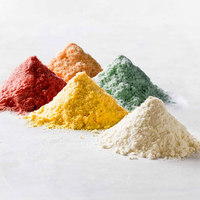Spray drying is the general process by which a slurry (a liquid with some percent solids) is processed into a powder by evaporating the water with gas or air. Materials that are spray dried have superior shelf life, are more easily stored and typically do not require refrigerated storage. When considering the process of spray drying, there are several factors that our chemical engineers have identified, that must be taken into account prior to drying:
- Rheological Properties
Rheology is the study of how matter flows, particularly liquids, and should be the first consideration for materials being spray dried. How viscous is the liquid and key temperatures? Will it be able to flow through the equipment? A secondary consideration here would be whether the liquid is a non-Newtonian fluid, namely if it’s shear-thinning (viscosity decreases with shear) or shear-thickening. Understanding these properties allows us to properly address batch processing, what atomization is best and how best to clean equipment once a campaign is completed.
- Solids in the Liquid
Understanding what percent of the slurry is solid (%S) is the next consideration. The %S is important when determining production throughput. Generally, the higher the %S the lower the water content, which means less evaporation and a higher production rate. Another reason knowing the %S is important is to ensure that we’re not exceeding a spray dryer’s evaporation capacity.
- Specific Gravity
Specific Gravity is important when considering product throughput. Measure in units of volume per time, it is important when converting into mass product rate. Prior to any campaign, we’re able to estimate throughput based on nozzle, method of atomization and feed pressure.
- Heat Sensitivity
Spray drying is a great option for heat-sensitive materials, but it depends upon the type of heat sensitivity. If batch liquid cannot be heated to achieve a proper viscosity, or if the batch liquid needs to be refrigerated until it can be processed, this may limit the capacity for spray drying.
- Chemical Properties
Chemical properties play an important role throughout many aspects of spray drying. Products at pH extremes are corrosive and can damage equipment if not properly handled. Some products may be flammable or have a high kst (explosion factor) or low MIE (minimum ignition energy), posing safety hazards that must be considered and evaluated. Abrasive products will damage pumps and any other points of contact (pipes etc.). Products that are hygroscopic (water attracting) may present with additional drying barriers. Thermoplastic materials will have a lower glass transition temperature, thus posing challenges with conveying and buildup. Understanding these properties are key to determining proper drying parameters and procedures.
- Suspension/Emulsion Stability
Many products are an emulsion of some form or another. It may also be a suspension or colloid. How stable these liquids are (how well they remain homogenous and well dispersed) will have a great impact on how well they can be spray dried. Excessive settling out for suspensions will produce uneven flow, plugging of nozzles, and negatively impact the final product’s characteristics. Emulsion coalescence also poses challenges.
- Foaming Capacity
If a product foams considerably when agitated, this must be taken into consideration and properly handled. It is important that foaming be controlled as it can cause overflow and waste; it can also cause possible issues with flow through the nozzle.
In summary, it’s important to have an understanding of many physical and chemical properties of a material prior to spray drying. Our technical team of engineers are well versed at helping customers evaluate and determine processes that ultimately scale their products from trial to full commercialization.


